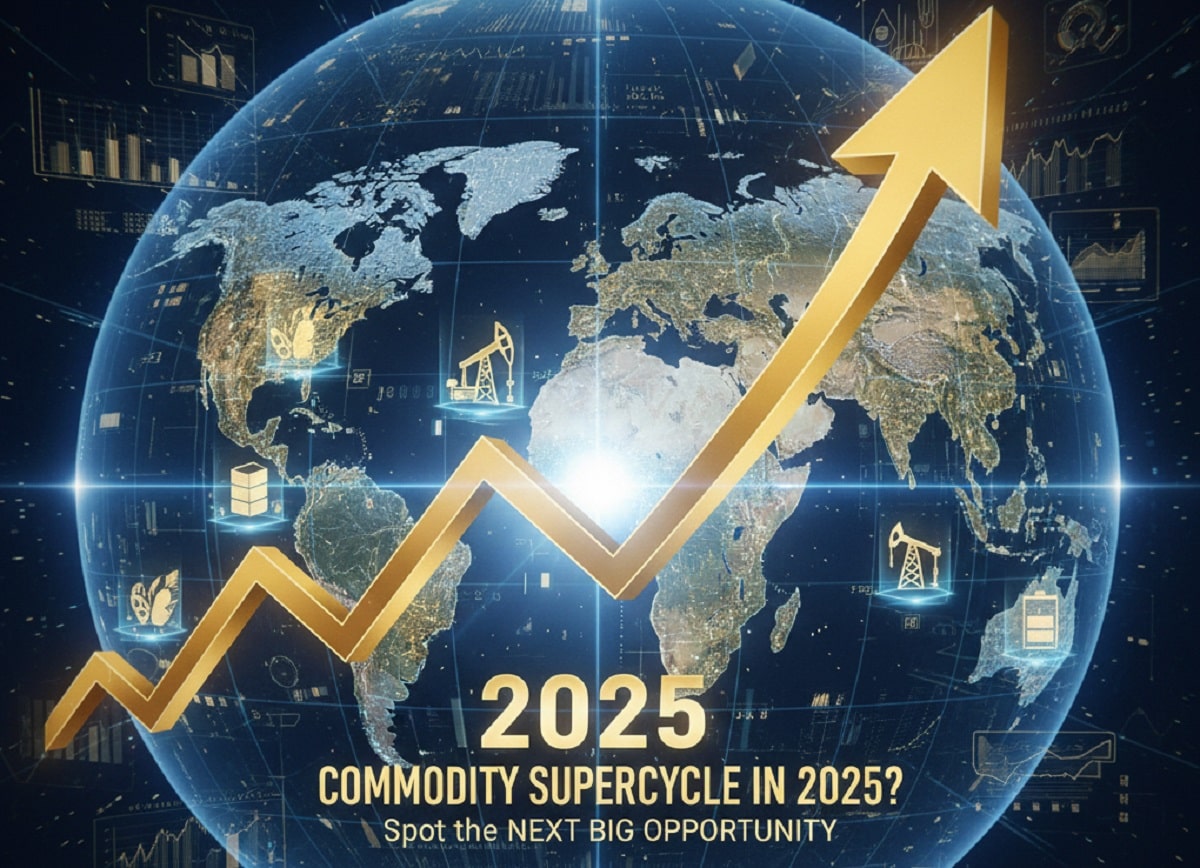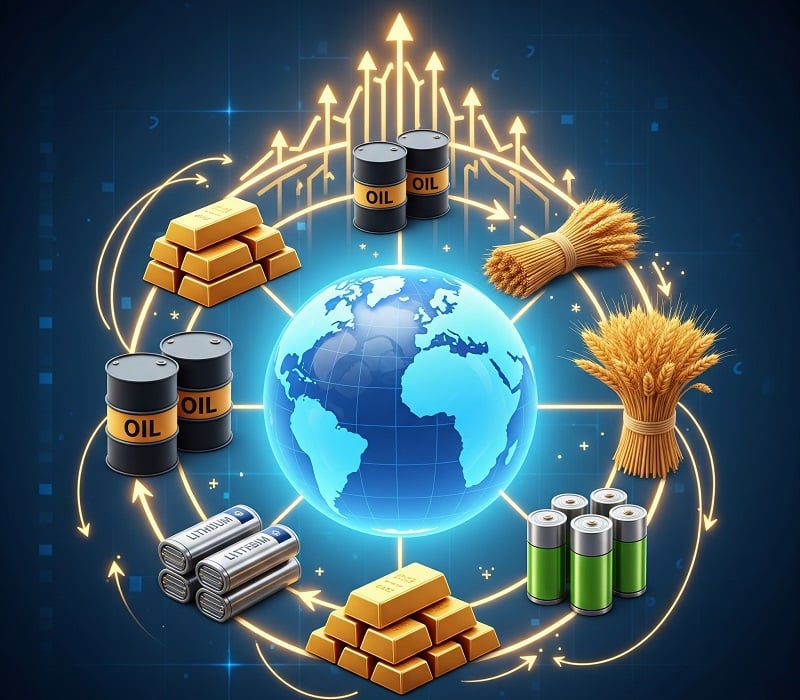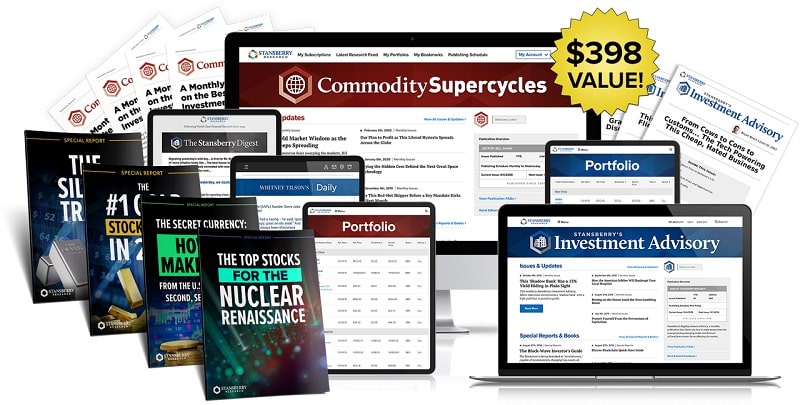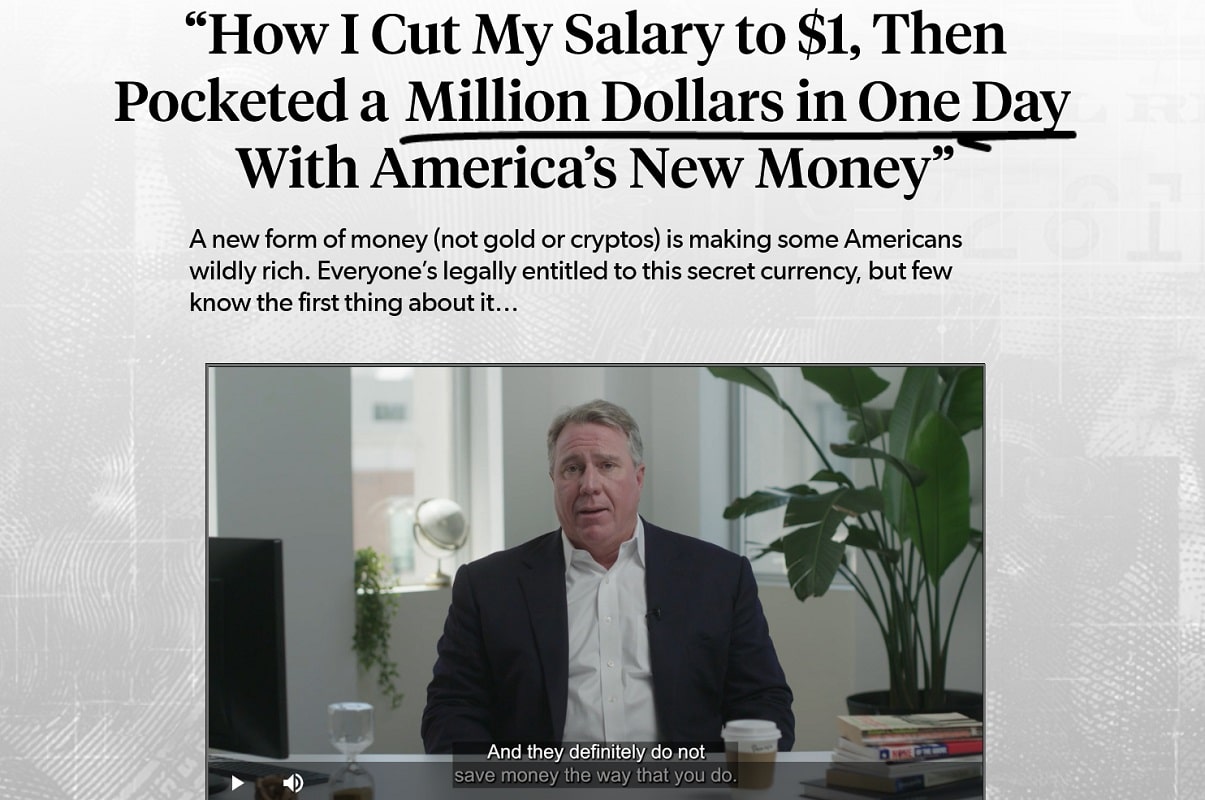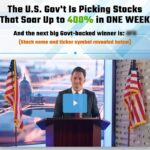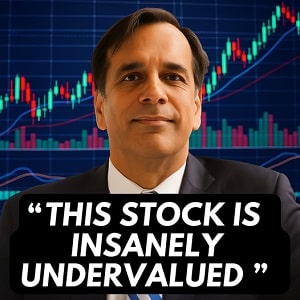Imagine the markets in 2008, when oil prices skyrocketed from $50 to $147 a barrel as China’s urban boom reshaped global demand. That was the last commodity supercycle—a rare window where investors could ride soaring prices in oil, gold, and metals to significant wealth.
Now, in 2025, the markets are buzzing with similar excitement. Is a new supercycle underway? Could this be the moment to turn a modest investment into substantial gains? Whitney Tilson, a hedge fund veteran with decades of experience, believes 2025 holds serious potential. Through his newsletter, Commodity Supercycles, he’s guiding investors to navigate this opportunity.
A commodity supercycle isn’t just a fleeting price spike; it’s a decade-long surge in demand for raw materials like oil, gold, and uranium, driven by massive shifts in the global economy. Think China’s skyscraper frenzy in the 2000s or America’s industrial surge a century ago.
Today, trends like AI’s voracious energy needs, a nuclear energy revival, and tight metal supplies are fueling speculation of a new supercycle. The guide below explores what’s driving these trends, what the data says, and how investors can spot the next big opportunity in 2025. Whether you’re a seasoned trader or a beginner with a retirement account, this article shows how Whitney Tilson’s Commodity Supercycles can help you profit. Let’s dive in.
What’s a Commodity Supercycle?
The Big Picture
Commodities—oil, gold, uranium—are the lifeblood of the global economy. A supercycle occurs when demand for these materials outpaces supply so dramatically that prices soar for years, often decades. Unlike short-term disruptions (like a storm halting oil production), supercycles stem from structural changes—think rapid industrialization or a tech revolution reshaping energy needs. The United Nations describes it as a “decades-long, above-trend movement” in commodity prices, and history confirms this pattern.
Consider the 2000s: China’s urban explosion pushed oil from $10 to $150 a barrel and gold from $250 to nearly $1,900 an ounce. Earlier supercycles hit in the early 1900s (U.S. factories), pre-World War II (arms races), and post-World War II (Europe’s rebuild). Each shared three traits: booming demand, constrained supply, and climbing prices. For 2025 to qualify as a supercycle, these factors must align again.
Why It Matters for Investors
Supercycles are a rare chance for outsized returns. In the 2000s, gold stocks delivered 30% annual gains, trouncing broader markets. Energy and mining companies, which amplify commodity price moves, can offer even bigger rewards. But these markets are volatile—gold saw six 15%+ drops during its 2001–2011 run. Success requires spotting trends early and managing risks smartly. That’s where this guide, and Tilson’s expertise, comes in.
What’s Driving a Potential 2025 Supercycle?
Several forces are converging to set the stage for a possible commodity supercycle in 2025. From AI’s energy appetite to a nuclear resurgence, here’s what’s driving the buzz.
AI’s Energy Surge
Artificial intelligence isn’t just a tech story—it’s a commodity game-changer. AI data centers, powering everything from chatbots to autonomous vehicles, are consuming electricity at an unprecedented rate. Goldman Sachs projects AI revenue will soar to $420 billion by 2027, up from $28 billion in 2022, with infrastructure spending ballooning. This could boost U.S. electricity demand by 15% over the next decade—a level unseen since the industrial era.
This power surge is fueling demand for key commodities:
-
Oil and Gas: Renewables are growing, but fossil fuels remain the grid’s backbone. S&P Global forecasts U.S. natural gas prices will exceed $4.00 per million British thermal units in 2025, up from $2.95 in 2024, driven by LNG exports and data center needs.
-
Uranium: Nuclear power offers clean, reliable energy for tech giants like Amazon and Microsoft, who are investing in small modular reactors (SMRs). Uranium prices, once $15–$20/kg in the early 2000s, hit $100/kg in 2024 and could reach $93/lb in 2025 as China and India expand reactor fleets.
AI’s growth is rewriting the commodity playbook, creating opportunities for savvy investors.
The Nuclear Resurgence
Nuclear energy is staging a comeback as a clean, dependable power source. After years on the sidelines, it’s gaining traction, with China leading the charge in reactor construction and SMRs—compact, cost-effective nuclear plants—emerging globally, from Dow Chemical’s Texas project to China’s Linglong-1. Uranium, the fuel for these reactors, is at the heart of this trend.
Here’s why uranium looks promising:
-
Supply Constraints: Low prices post-2007 stifled new mine development, with 5–10-year lead times for production.
-
Geopolitical Tensions: Russia and Kazakhstan, key uranium suppliers, face risks from sanctions or policy shifts.
-
Rising Demand: China and India’s reactor buildouts, plus tech companies’ nuclear bets, are outstripping supply.
When demand outpaces supply like this, prices can surge. Uranium could be a standout in 2025.
Gold: The Evergreen Safe Haven
Gold remains a go-to hedge against uncertainty, and its 26% jump to over $2,500 an ounce in 2024 proves its enduring appeal. JPMorgan sees $3,700 in reach for 2025, driven by:
-
Central Bank Buying: Nations like China and India are stockpiling gold to diversify reserves amid global tensions.
-
Inflation Concerns: Investors are flocking to gold as currencies weaken and inflation persists.
-
Limited Supply: Stricter environmental regulations and declining ore grades are choking new gold production.
Silver, critical for solar panels, is also poised for gains due to strong solar demand and tight supply. JPMorgan notes deficits in silver and platinum, signaling price upside. Royalty companies like Sandstorm Gold (SAND) offer a low-risk way to tap these trends.
Emerging Markets and Population Growth
The global population crossed 8 billion in 2022, and emerging markets like India are driving commodity demand. India’s expanding middle class craves energy, metals, and food, echoing China’s 2000s boom. McKinsey estimates urban populations will grow by 2.5 billion by 2050—equivalent to a new New York every six weeks. Each city demands copper for wiring, steel for construction, and oil for transport. This trend is a slow burn but a powerful one.
Supply Bottlenecks
Years of underinvestment have left commodity supplies stretched thin. Mining companies, scarred by the last supercycle’s debt, prioritized dividends over new projects from 2017 to 2022, and environmental regulations have slowed development. J.P. Morgan highlights the impact:
-
Copper: Demand is projected to rise 53% by 2040 for EVs and renewables, but new mines take 5–15 years to develop.
-
Lithium: EV-driven demand could grow sevenfold by 2030, with today’s oversupply potentially clearing by 2025.
-
Oil: OPEC+ cuts and Middle East tensions could push Brent crude to $80–$90 a barrel in 2025.
Tight supply plus strong demand is the recipe for a price boom—and a potential supercycle.
What the Experts Are Saying
Market reports offer a mixed but compelling case for a 2025 supercycle. Here’s a snapshot:
-
World Bank (April 2024): They predict a 5% drop in overall commodity prices, with oil (Brent) at $73 a barrel due to weak Chinese demand. Yet natural gas is expected to surge 55%, and precious metals gained 0.9% in 2024, defying the broader decline.
-
S&P Global (December 2024): They’re bullish on natural gas and uranium, citing AI’s power needs and nuclear growth. Gas prices could hit $4.00/MMBtu, and SMRs point to sustained uranium demand.
-
J.P. Morgan (2024): They see a supercycle in metals like copper, lithium, and uranium, driven by the clean energy transition, with mining stocks as key beneficiaries.
-
Forbes (March 2024): Gold’s 21% rise in 2024 could lead to $3,000 an ounce in 2025, with silver and platinum gaining from solar and industrial demand.
-
Market Index (January 2024): Uranium is forecast to hit $93/lb in 2025, and copper could reach $9,690 a tonne.
Oil’s outlook is murky, but gas, uranium, and metals are flashing supercycle signals. It may not be a universal boom, but key sectors are heating up.
How to Spot the Next Big Opportunity
Navigating a potential 2025 supercycle requires a clear strategy. Here’s how investors can seize the moment without getting burned.
Step 1: Track the Trends
Stay informed on the big drivers:
-
AI and Energy: Monitor AI spending updates from Goldman Sachs or tech giants’ moves into nuclear or gas-powered data centers.
-
Nuclear: Follow SMR projects and reactor developments in China and India. Check uranium price forecasts on Market Index or World Bank reports.
-
Gold: Track central bank purchases and inflation data via BullionVault or JPMorgan.
-
Supply News: Watch for mining investment updates, OPEC+ decisions, or Middle East developments on X or news outlets.
Step 2: Focus on High-Potential Commodities
Not all commodities are equal in 2025. The strongest bets include:
-
Uranium: Stocks like BWX Technologies (BWXT) and Constellation Energy (CEG) are well-positioned for the nuclear surge.
-
Gold and Silver: Sandstorm Gold (SAND) offers exposure with lower risk than traditional miners.
-
Natural Gas and Oil: Eni (E), with a 7% dividend yield, is a solid play for gas and potential oil price spikes.
Step 3: Leverage Expert Guidance
Commodity markets are complex, and expert insights can make the difference. Whitney Tilson’s Commodity Supercycles, published by Stansberry Research, offers a roadmap. For $129 a year (renewing at $199), subscribers get:
-
Monthly Analysis: In-depth reports on trends like AI’s energy boom and nuclear’s revival.
-
Stock Recommendations: A portfolio of 40+ stocks, including BWXT, CEG, SAND, and Eni, with clear buy and sell points.
-
Special Reports: Guides like “Top Stocks for the Nuclear Boom” and “Profiting from AI’s Energy Surge.”
-
Daily Updates: Tilson’s insights on market shifts, delivered straight to your inbox.
Step 4: Manage Risks
Supercycles can be turbulent, with 20–30% corrections common. To stay safe:
-
Diversify: Allocate 5–20% of a portfolio to commodities for conservative investors, or 20–40% for aggressive ones. Include stable dividend payers like Eni.
-
Ease In: Use dollar-cost averaging to spread investments over time.
-
Set Limits: Apply stop-losses based on technical levels to cap losses.
-
Follow Guidance: Commodity Supercycles provides position sizing (0.5–1% for riskier plays, 2–5% for stable ones) and exit strategies.
Step 5: Stay Informed
Read S&P Global, J.P. Morgan, or Market Index for price forecasts. Monitor X for market sentiment, but avoid chasing hype. Commodity Supercycles offers daily updates to keep investors grounded.
Risks to Watch
No investment is foolproof. Here are the challenges to consider:
-
China’s Slowdown: A weaker Chinese economy could drag down oil and iron ore, as the World Bank notes.
-
Tech Disruptions: New battery technologies could reduce lithium demand, or mining innovations could boost supply.
-
Geopolitical Swings: Middle East peace could lower oil prices, while conflicts could spike them.
-
Market Volatility: Even bull markets see sharp pullbacks, requiring disciplined risk management.
Commodity Supercycles helps navigate these risks with diversified picks and clear exit strategies.
Why 2025 Could Be the Year
The evidence points to a selective supercycle in 2025. AI’s energy demands, nuclear’s rise, gold’s strength, and supply shortages are driving uranium, natural gas, and metals higher. Oil remains uncertain, but Middle East tensions could shift its path. This isn’t a 2000s-style universal boom, but key sectors are poised for significant gains.
Take Action with Commodity Supercycles
Whitney Tilson, with over 30 years of hedge fund experience and a track record of beating the S&P 500, offers a proven guide through Commodity Supercycles. For just $129 a year (renewing at $199), subscribers gain access to his stock picks, daily insights, and a roadmap to navigate the 2025 supercycle, backed by a 30-day money-back guarantee. Don’t miss this opportunity.
Click here to join now and start investing with confidence.
Conclusion
2025 could mark the start of a powerful commodity supercycle. AI’s energy surge, nuclear’s comeback, gold’s rally, and supply constraints are setting the stage for gains in uranium, gas, and metals. While oil’s path is less clear, the right strategy can turn this moment into real wealth. Subscribe to Whitney Tilson’s Commodity Supercycles here for expert guidance and make 2025 your year to shine in the markets.

